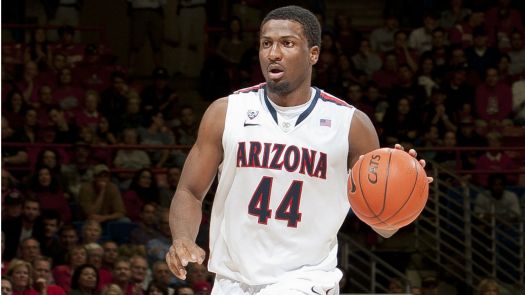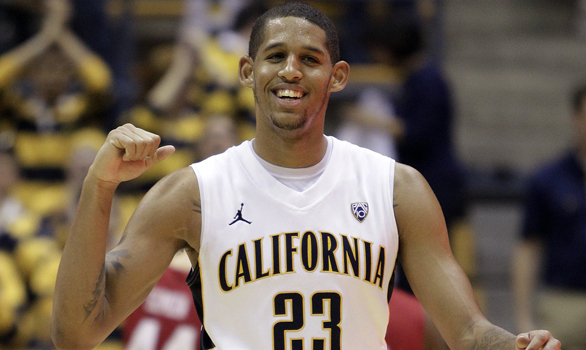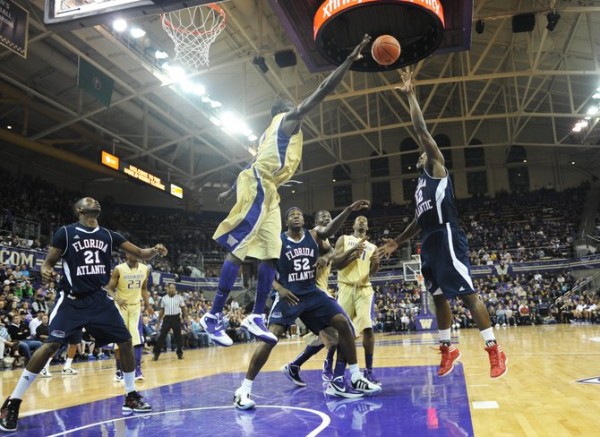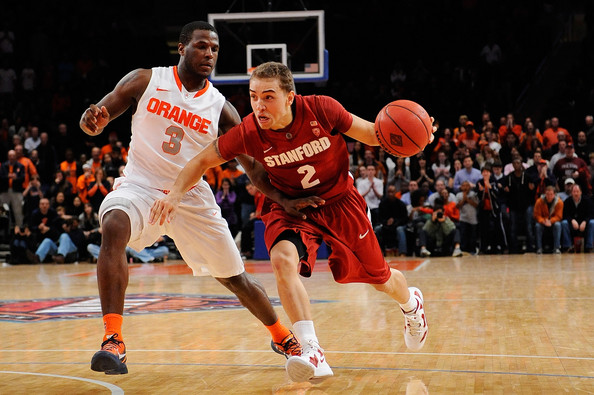Posted by Brian Goodman on November 1st, 2010

Andrew Murawa is the RTC correspondent for the Pac-10 and Mountain West Conferences and an occasional contributor.
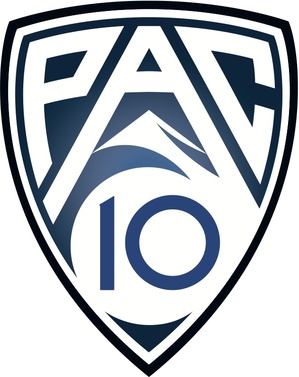
Predicted Order of Finish
- Washington (13-5)
- Arizona (12-6)
- UCLA (11-7)
- Washington State (10-8)
- Arizona State (10-8)
- Cal (9-9)
- USC (9-9)
- Stanford (6-12)
- Oregon State (6-12)
- Oregon (4-14)
All-Conference Team
- G: Isaiah Thomas. Jr, Washington (16.9 PPG, 3.9 RPG, 3.2 APG)
- G: Klay Thompson, Jr, Washington State (19.6 PPG, 5.1 RPG).
- G: Jeremy Green, Jr, Stanford (16.6 PPG, 3.8 RPG)
- F: Derrick Williams, Soph, Arizona (15.7 PPG, 7.1 RPG)
- F: Nikola Vucevic, Jr, USC (10.7 PPG, 9.4 RPG)
6th Man
Ty Abbott, Sr, Arizona State (12.0 PPG, 4.4 RPG)
Impact Newcomer
Josh Smith, Fr, UCLA: Smith is the biggest incoming recruit in the conference, in more ways than one. Ranked the 20th-best recruit in the 2010 class according to ESPNU, Smith also tipped the scales at somewhere over three bills when he stepped onto the UCLA campus this summer. Immediately, head coach Ben Howland put him in a conditioning program and Smith changed his dietary habits as well, putting him on the road towards dropping 40 pounds already. Paired with his soft hands and quick feet, the trimmed-down Smith will play a vital role in the Bruins’ attempts to bounce back from last year’s brutal campaign.
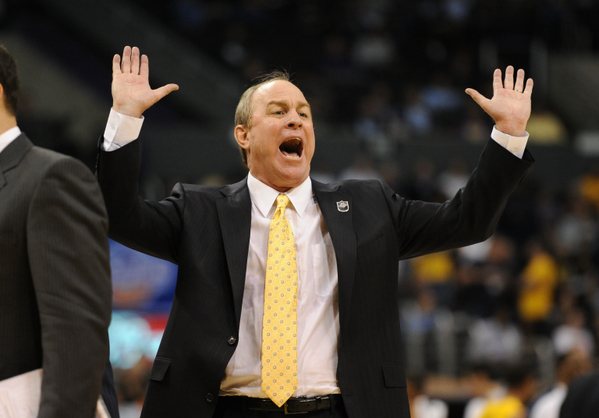
- UCLA’s Ben Howland is among several Pac-10 coaches looking to make the conference an NCAA Tournament threat again after a poor showing in 2009-10.
What You Need to Know
- Pac-10 Blues: Last year, the Pac-10 was saved from the indignity of receiving only one NCAA Tournament berth when Washington won nine of their last 11 games of the regular season, then proceeded to win the Pac-10 Tournament to clinch the automatic berth. Together with regular season champion California, the Huskies represented the Pac-10 well, advancing to the Sweet 16 before losing to eventual Final Four team West Virginia, while the Golden Bears fell in the second round to eventual champion Duke. However, the Pac-10’s limited success in the tournament did little to hide the fact that last season was a down year across the conference, and with 11 of last year’s top 20 scorers, and nine of the top 20 rebounders gone, it doesn’t seem that the talent level across the conference is ready to skyrocket.
- Stability and Youth: But, while there aren’t loads of household names up and down the rosters in the conference, there is some stability, as only Oregon welcomes a new head coach (Dana Altman, formerly of Creighton) and teams across the conference average a total of 3.2 returning starters. And there is plenty of youth, with just 17 seniors on rosters across the conference. Schools will need to see their youngsters step up quickly for the Pac-10 to improve upon last year’s showing. There is a bright side here, though. Even with five members of last year’s all-tournament team (all except the tournament’s Most Outstanding Player, Isaiah Thomas) and six of the ten All-Pac-10 first team members having graduated, most teams around the conference, with the significant exception of Cal, return the majority of their production – eight of the ten conference schools return more than 50% of their scoring production, and nine of the ten return more than 50% of their rebounding production. If the kids around the conference can put some of that experience they earned last season to use, this could be a much-improved conference, as the veteran coaches around this conference have proven their ability to coach up their players. There are five coaches in the Pac-10 with more than 300 career wins, and that doesn’t even include some of the most respected young coaches in the land like Sean Miller and Lorenzo Romar. While the talent level seems to be down across the conference, expect this lineup of stellar coaches to get the most out of what they do have.
- Last Roundup: This season marks the end of the Pac-10 conference. Next year the conference will welcome Colorado and Utah, officially becoming the Pac-12. In the process, plenty of tradition will be discarded: no more home-and-home round robin and the resultant crowning of a true regular season champion, the biggest change. There will be years where UCLA doesn’t visit McKale and Oregon won’t visit Hec Ed, for instance. But in the long run, the conference will add a Utah program that has had some significant success over the years (including a run to the national championship game in 1998) and a Colorado program that, well…hey, they made a Final Four in 1955, I’m told. In any event, come 2011-12, basketball season around the conference will have a different feel.
Predicted Champion
Washington (NCAA Seed: #5): The Huskies are pretty much the de facto favorite, given that last year’s regular season champion Cal lost about 85% of its scoring, but Lorenzo Romar’s team, despite having plenty of talent, still has some question marks. Not in question is the team leader, 5’8 junior point guard Isaiah Thomas, a dynamo who is the team’s leading returning scorer and an interesting personality. Paired in the backcourt with 6’0 senior Venoy Overton (8.5 PPG, 3.1 APG. 2.9 RPG), the duo are undersized but form an intimidating pair for opposing ballhandlers, with the quickness and aggressiveness to get up into their opponents, keeping the opposition from getting comfortable in the half-court set and forcing turnovers which the Huskies can use to jump-start their transition game. They can be overpowered by bigger guards in the half-court game, but use their quickness to good advantage defensively. On the offensive end, Thomas plays with a style that belies his stature, getting into the lane and drawing fouls or finishing in often spectacular ways. The Huskies also return sophomore guard Abdul Gaddy (3.9 PPG, 2.3 APG), the second-ranked point guard in the 2009 recruiting class, who struggled finding his rhythm in his rookie campaign. Should he get his swagger back and become a consistent offensive force for Washington, they could have one of the stronger backcourts in the nation, with junior Scott Suggs (4.7 PPG, 1.2 RPG) providing depth and a good long-range threat. However, up front the team still has something to prove, given the graduation of last year’s leading scorer Quincy Pondexter and the retirement from basketball over the summer of forward Tyrese Breshers due to medical issues. Matthew Bryan-Amaning (8.8 PPG, 5.9 RPG) and Justin Holiday (5.9 PPG, 4.5 RPG) figure to start at the forward spots, giving the Huskies an undersized but athletic starting five. Bryan-Amaning will need to prove himself capable of taking over Pondexter’s role, but all signs show that he is ready for that challenge, as he finished his junior season strong and was one of the big reasons for Washington’s improvement down the stretch. Depth up front will come from 6’8 junior scrapper Darnell Gant (2.5 PPG, 2.4 RPG), 7’0 transfer Aziz N’Diaye and 6’6 wing Terrence Ross, one of the conference’s most heralded newcomers, and a guy who could be an offensive weapon immediately for Romar, provided he can earn the minutes. In a conference where the talent level is presently in question, there is little doubt that the Huskies have plenty of talent. But they’d like to come out of the gates more quickly than they did last season and prove that they are ready to win on the road on a consistent basis, something they struggled with in 2009-10, when they lost their first seven games away from the Hec Ed. Odds are, they’ll be improved in that area due to an extra year of experience for their hyper-talented backcourt, but they’ll have a good early season test of that theory when they travel to the Maui Invitational during Thanksgiving week.
Read the rest of this entry »
| 2010-11 conference previews, 2010-11 Season Preview
| Tagged: abdul gaddy, Abe Lodwick, Ahmad Starks, alex stepheson, allen crabbe, andrew zimmermann, Angus Brandt, anthony brown, arizona, arizona state, Aziz N'Diaye, ben howland, Brandon Smith, Bryce Jones, cal, calvin haynes, carrick felix, craig robinson, Curtis Washington, dana altman, Daniel Deane, darnell gant, deangelo casto, derek glasser, derrick williams, Devon Collier, Donte Smith, Dwight Powell, ej singler, eric boateng, eric moreland, Garrett Jackson, Gary Franklin, harper kamp, herb sendek, isaiah thomas, Jack Trotter, jamelle horne, Jamelle McMillan, Jared Cunningham, jarrett mann, jeremy green, jeremy jacob, jerime anderson, jio fontan, Joe burton, joevan catron, johnny dawkins, jorge gutierrez, Josh Owens, josh smith, Justin Holiday, Keala Kling, ken bone, Kevin Parrom, klay thompson, Kvin O'Nill, kyle fogg, kyryl natyazhko, lamont jones, lathen wallace, Lazeric Jones, lekendric longmire, lorenzo romar, malcolm armstead, malcolm lee, marcus capers, Marcus Simmons, Markuri Sanders-Frison, matthew bryan-amaning, Maurice Jones, Michal Dunigan, mike montgomery, nikola vucevic, omari johnson, oregon, oregon state, quincy pondexter, reeves nelson, reggie moore, rihards kuksiks, roberto nelson, Ruslan Pateev, Scott Suggs, sean miller, Solomon Hill, stanford, Teondre Williams, terrence ross, trent lockett, ty abbott, tyler honeycutt, Tyrese Breshers, ucla, usc, venoy overton, washington, washington state
Share this story
